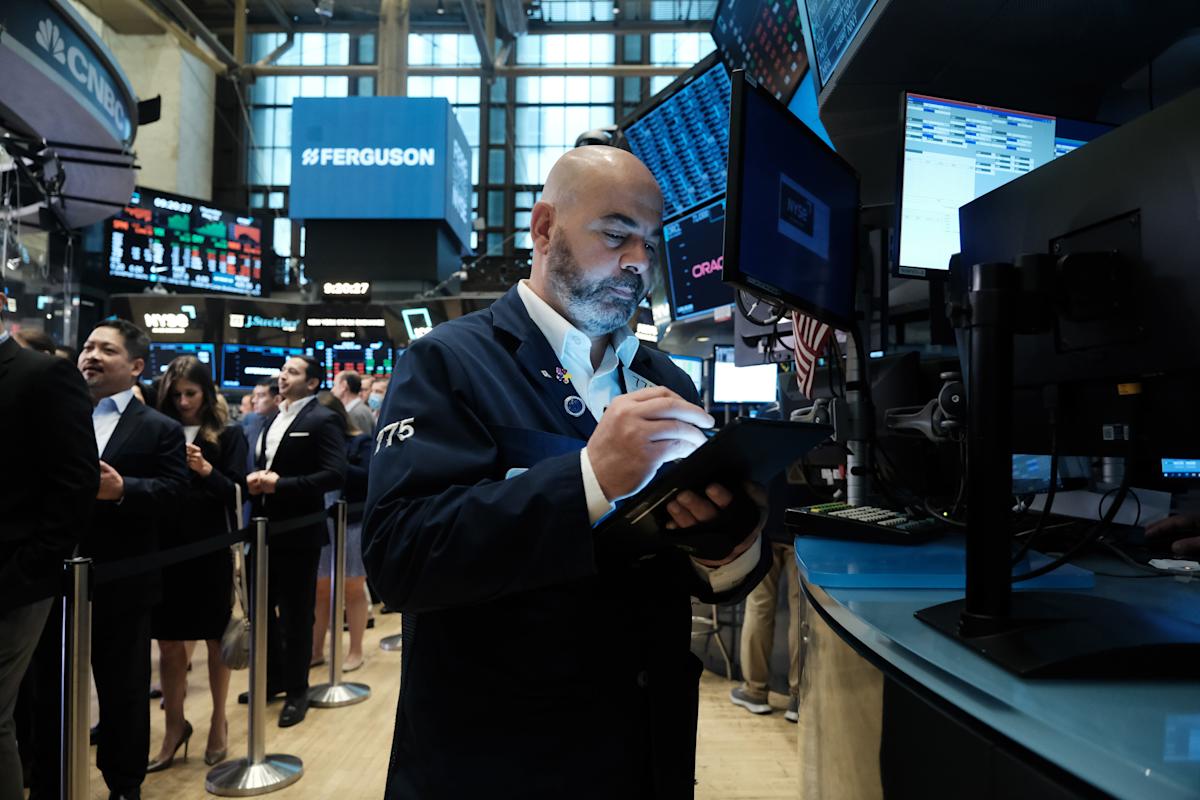US stock futures opened lower Thursday evening, with the major indexes heading for weekly losses as concerns over persistent inflation and the resilience of the US economy stirred up further volatility.
Contracts on the S&P 500 dropped in late trading. Earlier, the index closed within striking distance of a bear market, typically defined as a close of at least 20% from a recent record high. The index has declined by just over 18% since its Jan. 3 record close, and paced toward a weekly drop of 4.7% if losses hold through the end of Friday’s session.
The Dow Jones Industrial Average and Nasdaq Composite each also headed for weekly losses of 3.6% and 6.4%, respectively. Treasury yields have spiked and then wall gains back this week, with the benchmark 10-year Treasury yield ending Thursday below 2.9%. Bitcoin prices briefly sank below $27,000 on Thursday to reach the lowest level since Dec. 2020, as a cratering in prices of Luna further reverberated across the broader cryptocurrency market.
The market gyrations this week coincided with two major inflation reports that came in hotter-than-expected. Thursday’s Producer Price Index showed an 11% year-over-year rise in wholesale prices last month, with this rate moderating only slightly from March’s all-time high rate of 11.5%. And the Consumer Price Index released earlier this week showed a still-elevated 8.3% annual increase in prices paid by consumers last month.
“Inflation has certainly become not only topical, but a real issue for the broader market, as the Fed has also increased its outlook for the number of [interest rate] hikes needed,” Sonali Pier, managing director and portfolio manager at Pimco, told Yahoo Finance Live on Thursday. “In terms of the effect of inflation, it’s really at this point, we’re going to see if the Fed raising rates, unwinding some of the balance sheet, can take off some of that inflation froth. Because it’s quite high, and it’s starting to impact companies — from their ability to push through from a pricing power perspective, as well as consumers, whether that’s at the gas pump or as a result of food increases and the like.”
Other strategists agreed that the Fed’s response to inflation — and how well the economy holds up as the Fed tightens financial conditions to address inflation — will be the key factor to watch going forward for the markets.
“We’re in an environment right now where inflation is high. The labor market is very tight. The Fed wants to bring inflation down. They want to sort of cool the overheating in the labor market, which means their bias is to tighten financial conditions and try and slow growth,” Jason Draho, UBS Head of Asset Allocation, said on Thursday. “In that environment, it’s not great for any sort of financial assets.”
“[Once] we get some sort of real break on inflation that people become much more comfortable that it’s moderating, and moderating [to] a sustainable level that the Fed could be more comfortable, and they don’t have to hike more aggressively … I think that’s the key catalyst,” Draho said. “Unfortunately, that might take a few more months before the data starts to clearly show inflation is definitely below its peak, and the Fed could achieve its target two years out.”
“So I think for the time being, it’s definitely a choppy market,” he added.
—
6:10 p.m. ET Thursday: Stocks open lower
Here’s where markets were trading Thursday evening:
-
S&P 500 futures (EN=F): -10 points (-0.25%) to 3,917.25
-
Dow futures (YM=F): -73 points (-0.23%) to 31,579.00
-
Nasdaq futures (NQ=F): -41 points (-0.34%) to 11,906.25
—
Emily McCormick is a reporter for Yahoo Finance. Follow her on Twitter.
Read the latest financial and business news from Yahoo Finance
Follow Yahoo Finance on Twitter, Instagram, Youtube, Facebook, flip boardand LinkedIn
